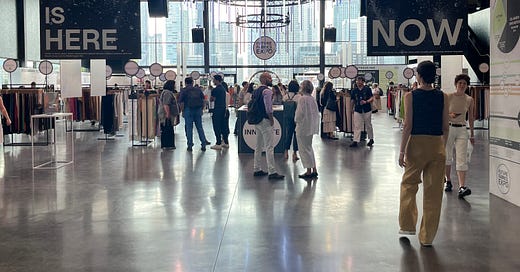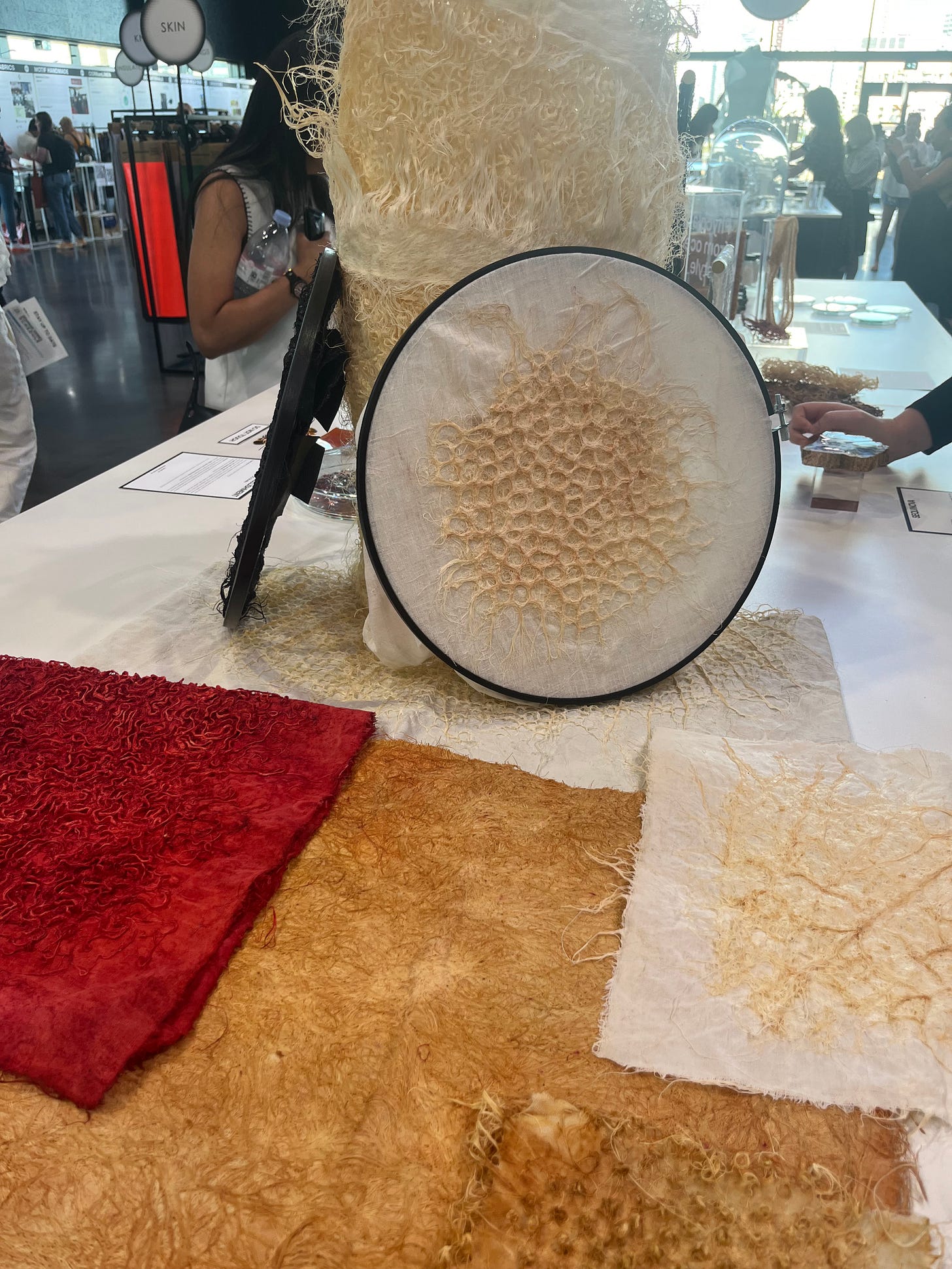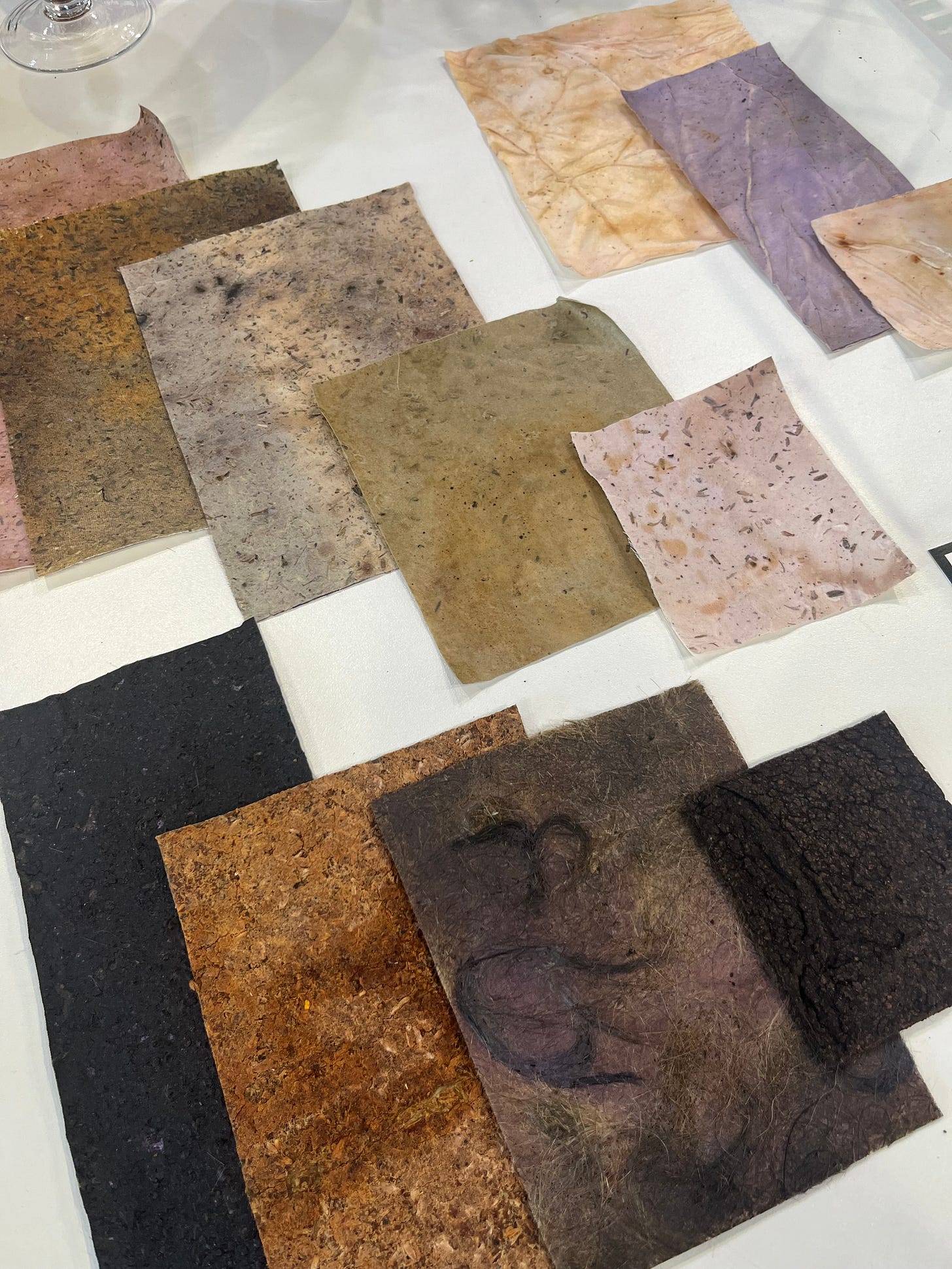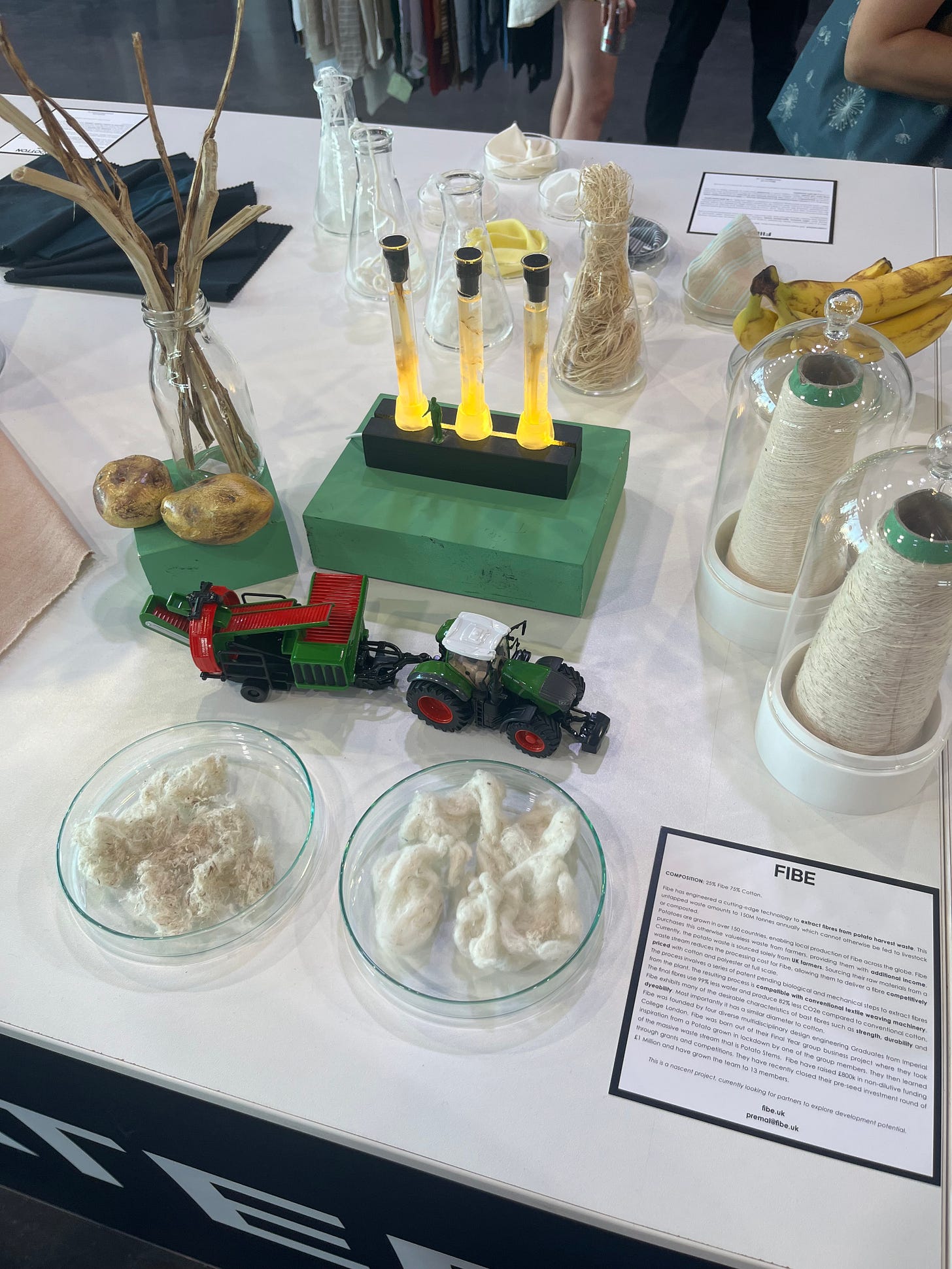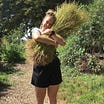Future Fabrics Expo: Next-gen materials vs regenerative farming, is fashion investing in the right places?
Future Fabrics Expo 2024 was a vast amalgamation of what the future may hold for fibre and fashion — and to an extent, agriculture.
The venue was considerably smaller the last time I visited in 2020, though still packed a punch; I wondered if the extensive array this time was due to investment, to startups affordability or because the landscape for fibres and textiles has indeed changed. What was once only a smattering of hand weavers or otherwise mills with too high MOQs for any small designer to purchase, is now a place where debates on organic vs regenerative take flight. Below are my reflections from day one, split into key themes.
Fashion and farming
The discussion on “regenerative” was centrally highlighted via entrance boards and individual information stands, plus a designated seminar. Organisations including Fibreshed had a stand to discuss wool, and books related to ecology were highlighted at the shop. However, there was a clear sway towards cotton; only a few leather hangers were available, a smattering bast fibre folk, the tiniest sliver of silk. A board indicated animal-derived materials as part of a regenerative farming system, though a larger board in a bigger space gave you “alternatives to leather”. When surrounded by synthetics and lab-based so-called “biomaterials”, this skew could manipulate the outcome of what visitors considered regenerative to be — but is it simply about cost accessibility of the space?
That being said, speculative designers brought to life truly unusual examples of small-scale regeneration through utilising ubiquitous-yet-invisible ingredients to create a magical material shown with Zena Holloway, Eirinn Hayhow and Fibe.
Commercially-ready or not, they do wow and therefore request that the viewer questions the whole ecosystem wrapped around it, bringing food directly into the picture.

